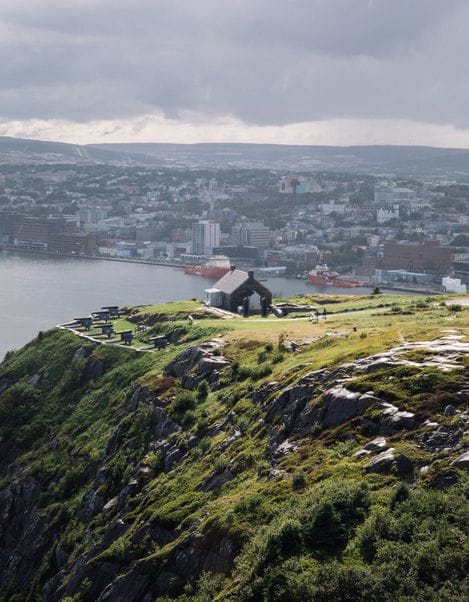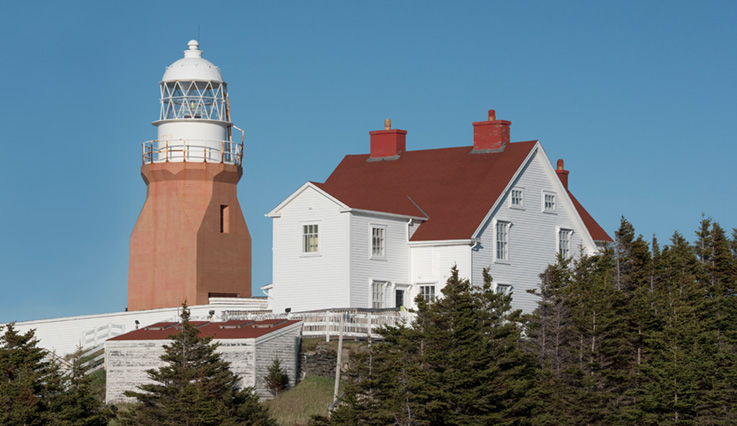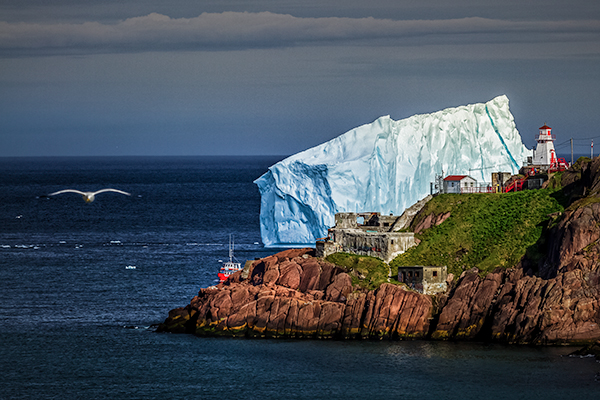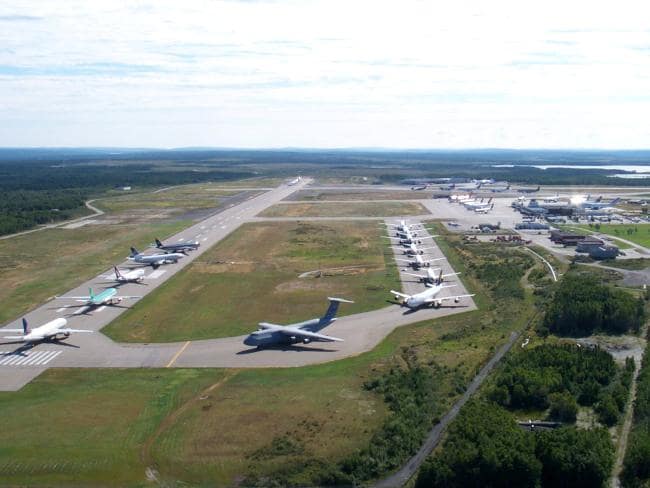Gander is a town located in the northeastern part of the island of Newfoundland in the province of Newfoundland and Labrador, approximately 40 km (25 mi) south of Gander Bay, 100 km (62 mi) south of Twillingate and 90 km (56 mi) east of Grand Falls-Windsor. Located on the northeastern shore of Gander Lake, it is the site of Gander International Airport, once an important refuelling stop for transatlantic aircraft and the largest airport in the world. Take a look below for 30 amazing and fascinating facts about Gander, Newfoundland and Labrador, Canada.
1. The airport is still a preferred emergency landing point for aircraft facing on-board medical or security issues.
2. Most of the streets in Gander are named after famous aviators, including Alcock and Brown, Amelia Earhart, Charles Lindbergh, Eddie Rickenbacker, Marc Garneau and Chuck Yeager.
3. Gander was chosen for the construction of an airport in 1935 because it is very close to the great circle route between New York and London.
4. In 1936, construction of the base began, and the town started to develop.
5. On 11 January 1938, Captain Douglas Fraser made the first landing at “Newfoundland Airport,” now known as Gander International Airport, or “CYQX,” in a single-engine biplane, Fox Moth VO-ADE.
6. During the Second World War, as many as 10,000 Canadian, British and American military personnel resided in Gander. The area became a strategic post for the Royal Air Force Air Ferry Command, with approximately 20,000 American- and Canadian-built fighters and bombers stopping at Gander en route to Europe.

7. After the war, the airbase became a civilian airport, and the location of the town was moved a safe distance from the runways. Construction of the present town site began in the 1950s, and the present municipality was incorporated in 1958; the settlement around the airport was eventually abandoned.
8. After the Second World War, the town grew as the airport was used as a refuelling stop for transatlantic flights, earning its name “Cross-roads of the world.”
9. Efforts have been made to diversify the economy from being dependent on the airport, particularly as new aircraft designs permitted longer-range flights without the need for landing to refuel.
10. Gander was the site of a major aircraft accident, Arrow Air Flight 1285, on 12 December 1985. 256 people were killed in the disaster, making it the deadliest air crash ever to happen in Canada.
11. In 2001, Gander International Airport played an integral role in world aviation in the hours immediately following the September 11 attacks when all of North America’s airspace was closed by Transport Canada and the United States Federal Aviation Administration (FAA). As part of Operation Yellow Ribbon, 38 civilian and 4 military flights bound for the United States were ordered to land at the airport—more flights than any Canadian airport other than Halifax International.
12. More than 6,600 passengers and airline crew members, equivalent to 66 percent of the local population—third highest number of passengers, behind Vancouver International Airport, which received 8,500, and Halifax—found themselves forced to stay in the Gander area for up to six days until airspace was reopened and flights resumed.

13. Residents of Gander and surrounding communities volunteered to house, feed, and entertain the travellers as part of Operation Yellow Ribbon. This was largely because Transport Canada and Nav Canada asked that transatlantic flights avoid diverting to major airports in central Canada, such as Toronto Pearson and Montréal-Dorval.
14. Lufthansa named one of its Airbus A340 (registration D-AIFC[5]) aircraft Gander/Halifax to thank both cities for their handling of rerouted travellers on 11 September. A book, The Day The World Came to Town, included several stories about Gander’s role during that and subsequent days.
15. A radio play, The Day the Planes Came, by Caroline and David Stafford, dealing with the effect on Gander of the 11 September passengers was first broadcast in June 2008 on BBC Radio 4 and was repeated in October 2009.
16. A TV movie, Diverted, was made in 2009. In February 2010, NBC aired a report by Tom Brokaw on Gander’s role in the displacement of hundreds of planes on 9/11 during coverage of the 2010 Winter Olympics in Vancouver.
17. A musical by Irene Sankoff and David Hein, Come from Away, which retells stories of the people who were diverted to Gander and the people of the town who had helped out was mounted on Broadway in 2017.
18. The town was also profiled in Moze Mossanen’s 2018 documentary film You Are Here.

19. National Geographic Episode “9/11: Control The Skies” tells the story of the air traffic controllers, first broadcast on 11 September 2019.
20. The Town of Gander continues to pursue business opportunities in the aerospace industry.
21. Gander is located 310 km (190 mi) northwest of the provincial capital of St. John’s, and about 970 km (600 mi) northeast of Boston.
22. According to Statistics Canada 2016 census, the population of the town of Gander was 11,688, a 5.7% increase from 2011.
23. There are a total of 4,887 private dwellings and the town’s total area is 104.25 km2 (40.25 sq mi), with a population density of 112.0/km2 (290/sq mi).
24. As of the 2006 census, the population of Gander was found to be 97.4% white with all visible minorities totaling 0.9% of the population and the aboriginal population totaling 1.7%.

25. Gander has a cool to cold humid continental climate (Köppen climate classification (Dfb).
26. It combines moderately warm and rainy summers with cold and very snowy winters. Due to the maritime influence from the Atlantic Ocean, seasonal changes are slightly less pronounced than in Canada’s interior, but still substantial given its near-coastal position.
27. Gander offers all the conveniences of a major centre. The newest development is a continually-expanding business park with big box stores such as Walmart Canada and Kent Building Supplies. There are two malls: the Gander Mall, with stores such as Canadian Tire, Sport Chek, Dollarama, Claire’s, Pseudio, Eclipse, and Nan’s Pantry, and the Fraser Mall, with a Foodland (Sobeys) and various government offices. Town Square at the intersection of Elizabeth Drive and Airport Boulevard has several local businesses, including Riff’s, and a Co-op grocery store.
28. All five major Canadian banks have branches in Gander. TD Canada Trust and RBC Royal Bank are located in Town Square, CIBC in the Fraser Mall, as well as Bank of Montreal and Scotiabank on Airport Boulevard and Roe Avenue, respectively. There are two credit unions: Newfoundland and Labrador Credit Union and Hamilton Sound Credit Union, both on Roe Avenue.
29. Gander airport features in the Nevil Shute novel No Highway and the film adaptation, called No Highway in the Sky in Anglophone countries other than the UK.
30. In 1991, the International Astronomical Union’s Working Group for Planetary System Nomenclature (IAU/WGPSN) officially named a crater on Mars after Gander. Gander Crater lies at latitude 31.5° south, longitude 265.9° west; its diameter is 38 km (24 mi).




